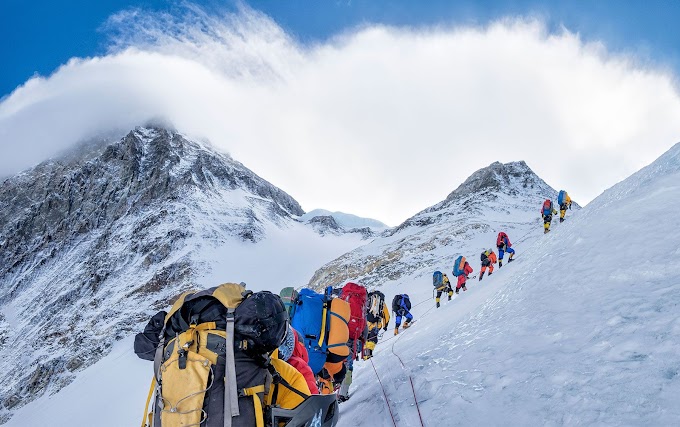**Burj-Khalifa**.
The Burj Khalifa stands as an iconic symbol of modern architecture and engineering prowess, dominating the skyline of Dubai and capturing the world's attention. Completed in 2010, this extraordinary skyscraper has not only redefined the limits of design and construction but also become a symbol of Dubai's rapid development and ambition.
## **Introduction: A Monument to Human Ingenuity**
The Burj Khalifa, formerly known as the Burj Dubai during its construction, is the tallest structure in the world, soaring to an impressive height of 828 meters (2,717 feet). Designed by the renowned architect Adrian Smith, in collaboration with the architecture and engineering firm of Skidmore, Owings & Merrill, the tower's development was part of a larger project aimed at diversifying Dubai's economy and reducing its dependence on oil.
## **Design and Architecture: A Vertical Masterpiece**
The design of the Burj Khalifa is a testament to both aesthetic elegance and structural innovation. The tower's sleek, tapering form was inspired by the Hymenocallis, a desert flower that grows in the region. The exterior of the tower is clad in reflective glazing, creating a shimmering effect and reflecting the changing colors of the sky. This design not only enhances the building's visual appeal but also serves practical purposes by reducing the need for excessive artificial lighting.
The Burj Khalifa consists of a central core, around which three wings are arranged. This Y-shaped structure not only provides stability but also maximizes the amount of residential space with stunning views of the surrounding landscape. The tower's exterior is adorned with various setbacks, creating a distinctive step-like pattern that adds to its architectural allure.
## **Construction: Overcoming Challenges at Great Heights**
The construction of the Burj Khalifa posed numerous challenges, mainly due to its unprecedented height. The foundation of the tower required an enormous amount of concrete, setting a world record for the largest continuous concrete pour. The engineers also had to contend with the region's extreme temperatures, finding innovative ways to pour concrete and manage the heat.
One of the notable features of the Burj Khalifa's construction is its use of a reinforced concrete structure, a departure from the more common steel-frame construction in tall buildings. The decision to use reinforced concrete was driven by its ability to withstand the high wind loads and seismic forces at such elevations. Advanced construction technologies and materials were employed to ensure the tower's stability and durability.
## **Vertical Transportation: Elevating the Experience**
Ascending the Burj Khalifa is a journey in itself, thanks to its cutting-edge vertical transportation system. The tower is equipped with high-speed elevators, some of which are double-deck cabins that can carry passengers to the upper floors in a matter of seconds. The observation deck, located on the 148th floor, offers breathtaking panoramic views of the city and the surrounding desert. Visitors can experience the thrill of looking down at the world from a height that was once unimaginable.
## **Sustainability: Melding Luxury with Environmental Responsibility**
In addition to its architectural and engineering marvels, the Burj Khalifa is also a pioneer in sustainable design. The tower incorporates various features to minimize its environmental impact. The cladding system helps in reducing solar gain, thus decreasing the need for air conditioning. Additionally, a condensate collection system captures water from the building's cooling system for reuse in irrigation.
The tower's energy-efficient lighting system further contributes to its sustainability initiatives. LED lighting is used extensively, not only enhancing the building's aesthetic appeal but also significantly reducing energy consumption. The Burj Khalifa stands as a shining example of how luxury and environmental responsibility can coexist.
## **Cultural Significance: A Global Landmark**
The Burj Khalifa's significance extends beyond its architectural and engineering achievements. It has become a symbol of Dubai's ambition and economic diversification. The tower is featured prominently in Dubai's marketing and tourism campaigns, attracting millions of visitors each year. Its observation decks offer not only stunning views but also insights into the city's history and future aspirations.
Moreover, the Burj Khalifa hosts various cultural events and celebrations. The annual New Year's Eve fireworks display at the tower has gained international acclaim, drawing spectators from around the world. The tower has become a focal point for celebrations, marking milestones and showcasing Dubai's global standing.
## **Challenges and Criticisms: Beyond the Glittering Facade**
While the Burj Khalifa has received widespread acclaim, it has not been without its share of criticisms and challenges. Some argue that the tower, along with other extravagant projects in Dubai, reflects unsustainable development practices. Concerns have been raised about the environmental impact of such large-scale projects, particularly in a region facing water scarcity and other ecological challenges.
Economic considerations also come into play. The global financial crisis of 2008 had a significant impact on Dubai, affecting its real estate market and leading to a temporary halt in construction activities. The completion of the Burj Khalifa amid these economic challenges underscores the city's determination to forge ahead despite adversity.
## **Conclusion: A Towering Legacy**
In conclusion, the Burj Khalifa stands tall not only in terms of its physical height but also as a testament to human ingenuity, ambition, and resilience. Its design and construction pushed the boundaries of what was previously thought possible, redefining the skyline and setting new standards in the world of architecture and engineering.
Beyond its structural marvels, the Burj Khalifa serves as a symbol of Dubai's aspirations and global prominence. It has become an integral part of the city's identity, attracting visitors and attention from around the world. While debates may continue about the sustainability of such ambitious projects, the Burj Khalifa remains a towering legacy, a testament to the marriage of vision and execution in the realm of modern architecture.
You may like this,World's Biggest Mountains.https://www.blogger.com/blog/post/edit/6406601708535056137/4527230268808643077
2)Imran khan.https://www.blogger.com/blog/post/edit/6406601708535056137/6385315132078946390
3).Ethereum Cryptocurrency.https://www.blogger.com/blog/post/edit/6406601708535056137/6839431752756394215
4)Bitcoin..https://www.blogger.com/blog/post/edit/6406601708535056137/9191063643582476593

.jpeg)




.jpeg)








